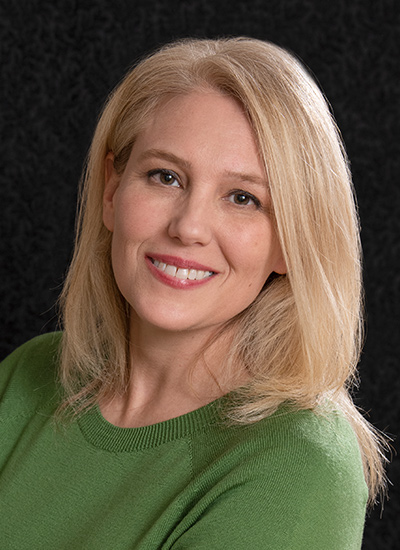
What kind of person spends over $1,000 on a water-cooled mattress pad? Someone with more money than sense, probably. Well, paint me green and call me a pickle; I’m guilty as charged.
As a writer who works from home, my natural habitat is the bed. You can tell me all you like that working at a desk is better ergonomically, but you might as well tell it to my dog, who’s got about as much use for a desk as I do. Left to my own devices, I might leave my bed about once a week. As a result, I’m a sucker for any gadget that promises to increase my comfort in my writing and sleeping space.
Hear Sleepopolis’ director of sleep health, Dr. Shelby Harris, chat all things sleep on our podcast Sleep Talking With Dr. Shelby!
When my spouse Zak and I moved from Southern California to Singapore in August 2021, we bought an adjustable bed with a memory foam mattress. I reasoned that if I was going to sit up and write in bed every day, I may as well have a bed that cradled my neck and back as I worked. I already knew that memory foam tends to sleep warm, but I had failed to reckon with the sheer force of Singapore’s heat and humidity. Every morning, we both woke with beads of sweat pooling on our upper lips. My scalp got grimy every day because I was sweating through my hair into my pillow.
Many people who live in Singapore solve this problem by blasting the air conditioning all night. I never liked this idea; it seemed so bad for the environment on top of how much money it cost. However, I didn’t see any real alternative. I resigned myself to nodding off every night to the plaintive whoosh of the mini-unit.
One night not long after we arrived, Zak’s boss invited us to dinner at his house. As new expats do, we immediately started asking for advice on how to navigate unexpected situations we were encountering. One of the topics that came up was sleeping habits. I asked Kingsley whether he ran the AC all night too. His eyes lit up.
“Do you know those water-cooled knee braces?” he asked. I actually had no idea what he was talking about, but he was so excited to tell his story that I didn’t want to ruin his momentum, so I nodded. “You can buy a mattress pad that uses water to cool your bed!”
Since Zak works in tech sales, he loves anything to do with gadgets. Kingsley knew exactly the right bait to use. Zak’s eyebrows shot up, and he leaned forward in his chair. “You mean we don’t have to cool the entire room all night? Go on…”
What Is the Ooler Sleep System?
The Ooler Sleep System is a device that acts as a smart thermostat for your bed. It consists of several parts. First comes the Chilipad, a mattress pad with plastic tubes running through it and a big hose coming out of the top. The hose connects to the Ooler control unit, a plastic box designed to sit near or under your bed that circulates water through the mattress pad.
The control unit looks a little like a speaker due to the mesh on the front. It comes in either gray or white with an LED screen that displays the temperature that the unit has been set to. Next to the screen are buttons to adjust the temp up or down. You can display the temperature in either Fahrenheit or Celsius, although if you choose Celsius, the temperature shows only to the nearest half degree. The final piece of the system is your own cell phone. The Ooler app, available for both iPhone and Android, allows you to control the unit from your phone.

The Ooler sleep system can be customized to fit either one sleeper or two. If you choose the “me” option, you will receive a Chilipad that covers only half the bed; if you choose “we,” the Chilipad will cover the entire bed, along with two control units. The Chilipad comes in queen, king, or California king sizes. Pricing varies depending on the mattress size and whether the system is targeting one person or two.
Features
- The Ooler system can set your bed at a wide range of temperatures, ranging anywhere between 55 and 115° F, or 13 and 46° C.
- The two-person, or “we,” version of the sleep system allows each sleeper to choose the temperature for their half of the bed separately. No more fights over the correct weight of the comforter when your partner sleeps warmer than you do!
- The Ooler app enables the user to set the temperature of the bed remotely via Bluetooth.
- You can schedule the Ooler’s temperature to heat up or cool down according to a schedule. For example, if you’re someone who typically starts to feel cold at 3:00 in the morning, you can program the system to warm up at that time.
- The Ooler system has a “warm wake” feature that gradually increases the temperature of the bed before the time you select, triggering your body to wake up.
Setup
The Ooler was easier than I had expected to set up. The Chilipad, like many other mattress pads on the market, features elastic loops that slip over the corners of the mattress to keep it in place. The two sides of the Chilipad boast different materials — you can place the “cool mesh” side face up if you normally sleep hot, or flip it over to the “reversible comfort” polyester-cotton blend side.
In my experience, the cool mesh was not noticeably cooler than the poly-cotton side; the actual temperature of the bed was much more greatly affected by the temperature the unit was set at than which side of the mattress pad we had facing up. Since we got the two-person unit, each side of the mattress pad had its own hose dangling out. We positioned the hoses at the head of the bed and threaded them underneath the frame to click into the control unit. The hoses snapped right in and were surprisingly secure, with virtually no droplets of water escaping.
To set up the control units, you first pour in about a cup and a half of water, and turn the unit on to distribute the water throughout the tubes in the Chilipad. Then you continue pouring water into the control units until they’re full, and close the cap. We placed the control units, which each take up a bit less than a cubic foot of space, underneath our adjustable bed frame. They fit with room to spare. The final step is to connect the app via Bluetooth.
How Did It Work?
When we first installed the Ooler on our bed, I immediately set it to 55. In less than 10 minutes, I felt as though I had wandered into a walk-in freezer. I couldn’t believe how well it worked! It may have been the first time I was truly cold since leaving Los Angeles.
Zak and I spent several months enjoying our frosty new bed, tweaking our sleeping schedules and playing around with the “warm wake” feature. (Pro tip: setting your bed to wake you up by reaching 115° at 6:30 a.m. is probably too hot. It does make for a very effective alarm clock, though.)
I had been worried that the Chilipad would not work on an adjustable bed, fearing that folding the mattress pad by sitting up the bed might damage the tubes and affect the Ooler’s ability to cool the bed. I need not have feared; those tubes are made out of a rigid plastic that is resistant to crinkling. More on that later.
As we worked our way through our honeymoon period with the Ooler, we did notice a few quirks that Sleepme might want to take into consideration for subsequent releases of the Ooler.
Comfort
I am a sensitive sleeper. I don’t remember having met the Brothers Grimm, but apparently they knew me well enough to cast me as the protagonist in their fairy tale “The Princess and the Pea.” (I’m flattered, guys!) The smallest bit of grit in the bed sends me running for the hand vacuum. You’d think that would curtail my penchant for eating potato chips in bed, but you’d be wrong.
For a water-cooled mattress pad like the Ooler, the plastic tubing needs to be rigid enough for water to flow underneath a hundred-pound (or more) human sleeping on top. However, to take greatest advantage of the cooling effect, the manufacturer recommends that the mattress pad lie immediately underneath the fitted sheet, without any padding in between. Zak says that he never noticed the feeling of the plastic tubes inside the mattress pad beneath him. It’s always interesting to find out new things about your longtime partner; I had always assumed that Zak had the ability to feel sensations like a normal human, which is another way to say that I definitely noticed sleeping on top of the tubes. Over time, I got used to them, but I never found the Chilipad 100% comfortable. However, it beat running the AC all night.

Noise
The Ooler emits a noticeable hum the entire time it is on. The control units can toggle between three modes: boost, regular, and silent. Boost mode cools your bed the fastest but is also the noisiest. I seldom used regular mode, not seeing the point. During most nights, I set my unit to silent. For sleepers who enjoy falling asleep to white noise, the Ooler’s hum might be a selling point. However, I prefer to sleep in as quiet a room as possible, and I did notice the noise at first. Like the plastic tubes inside the mattress pad, I can say that over time, I got used to the noise, but I would have liked an even quieter machine better.
Washing and Maintenance
The manufacturer recommends that the mattress pad be washed every one to three months. You accomplish this by unsnapping the hoses and carrying the pad into the bathroom. Then you use the drain key to send the water into your shower or bathtub. When the water appears to be completely drained from the hoses, you roll the pad around the hoses and secure them with the elastic straps that attach the pad to the bed. Finally, you chuck the bundle into your regular washer. You can dry the pad in a dryer on low.
I successfully washed the Chilipad several times according to directions. However, after the most recent wash, I noticed that when I put the Chilipad back on my bed, the fabric got wet where the hose exited the pad on my side. Had I washed the pad less than gently? Possibly; those things are heavy and unwieldy to handle, and I admit that I’m not always as careful as I should be. This new leak took place not long before we were preparing to leave Singapore, so I didn’t have time to contact customer service to resolve this issue.
Then, the Ooler Stopped Working
At a certain point a few months in, the Ooler stopped working, leaving my bed at ambient temperature. When I woke up in a sweat to email their customer service department, the person who responded pleasantly explained that something called a WOP chip likely needed to be reset. I refrained from making a Megan Thee Stallion joke.
The tech described the Water Overheat Protection chip’s tendency to misfire and gave me instructions how to reset it. This involved disconnecting the hose from my control unit, flipping it over, and pressing a chopstick into a hole in the bottom of the unit. I was unsure at first whether I had succeeded — there was no satisfying click to indicate that the chip had been reset — but I turned the unit right side up and plugged the hose back in. Much to my relief, the system fired right back up and resumed cooling my side of the bed normally. However, over time, the intervals between needing to reset the WOP chip grew shorter and shorter. By the time I left Singapore, I was resetting the unit about once a month. Since I had bought a refurbished unit, the warranty extended only for one year.
In addition, close to the time that we were packing up our house to come back to the States, an eerie sound started drifting into my dreams. It was never loud enough to catapult me out of the sheets in a panic, but it was definitely noticeable and getting worse. One early morning, I sat bolt upright in bed, elbowing Zak in the ribs to wake him up. “Did you hear that?” I hissed.
“What are you on about?” he asked, scraping crusties out of the corners of his eyes.
“Do you hear someone choking a robot?” I asked. “I think it’s coming from under the bed!”
We traced it to my side. The motor seemed to be seizing up. I was worried it was going to start an electrical fire, so I unplugged the thing. In a stroke of poetic timing, we were leaving Singapore in less than a week, and I was finally done with the Ooler.
Did I Mention How Much It Cost?
The reason Zak and I bought a refurbished unit instead of buying a completely new model was the price point. The list price on the “we” system for a king bed at the time I first considered buying it was $1,799. Refurbished units came cheaper; including shipping to my home in California (whence we carried it on a plane to Singapore after a visit home), my total cost was a bit over $1,300.
Possible User Error
It’s entirely possible that the way Zak and I used the Ooler contributed to shortening its lifespan. It was only after we had been using it for nearly a year that we read the user manual carefully enough to notice that the manufacturers recommend filling the control unit only with distilled water to prevent the buildup of sediment. While we did use filtered water, we may have gotten even more mileage out of the Ooler if we had simply started with distilled.
We also have a cat and a dog. Our dog Kiki is a Golden Retriever/Bernese Mountain Dog mix. Both of her parental breeds have luxuriant fluffy coats that shed constantly. Other people, when cleaning, get rid of dust bunnies hiding under furniture; I always called mine Kiki badgers. I don’t know whether pet hair getting sucked into the control unit may have affected its functioning, but I can’t imagine that it helped.
Overview
All in all, the Ooler sleep system reminds me of a fish tank. When we first got the new and shiny Ooler units, we loved them. We had a lot of fun exploring what they did, like watching new fish. Not too long in, they turned out to need more maintenance than we had bargained for. Finally, when the fish died, we didn’t quite know what to do.

I Use Podcasts to Fall Asleep Every Night — What Are the Risks? Here’s What Doctors Say

CPAP Recall Update: Philips Announces New Plan to Improve Product Safety

Are Naps Bad For You? Study Links High Blood Pressure, Stroke Risk to Daytime Snoozing





























